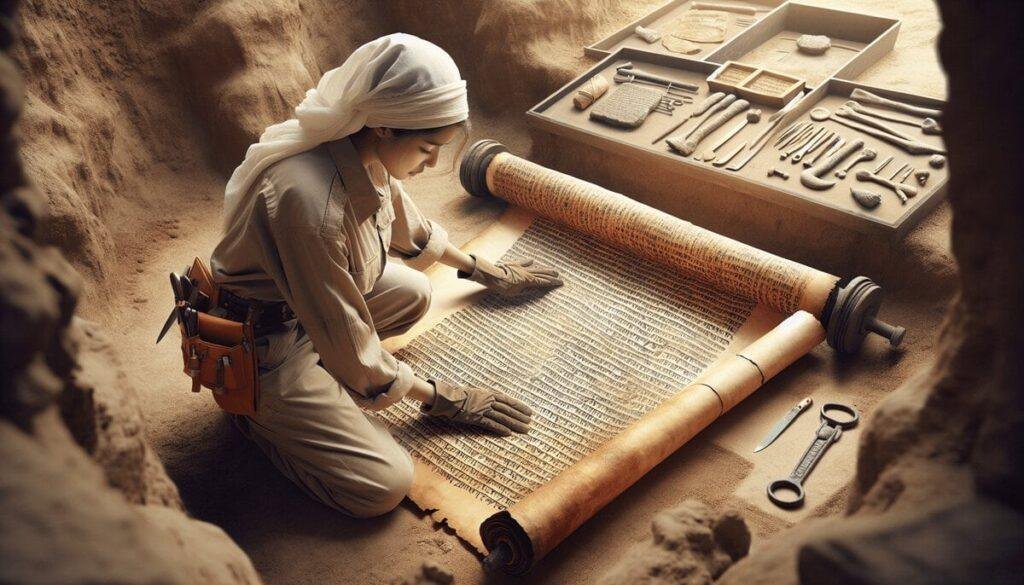Have you ever wondered how ancient civilizations fused their faith with craftsmanship in their daily lives? The study of biblical archaeology unveils how ancient sacred crafts are interwoven with religious practices and societal norms of biblical times. By examining archaeological discoveries, you explore the delicate art of crafting sacred objects, which reveal not only the ingenuity of ancient artisans but also the depth of spiritual expression prevalent in biblical societies. This article delves into these ancient crafts, weaving together threads of historical context, archaeological evidence, and their significance in both past and present contexts.
Discovery Context
Biblical References
The Bible is a treasury of references to ancient crafts, from the detailed descriptions of Solomon’s Temple to the skillfully woven priestly garments. These texts offer glimpses into the sacred art practiced by skilled artisans whose work embodied religious devotion. Notable examples include the construction of the Ark of the Covenant and the creation of intricately designed tabernacle elements, showcasing the importance of craftsmanship in divine worship and rituals.
Historical Background
Dating back thousands of years, biblical archaeology often bridges the gap between scripture and history. During biblical times, craftsmanship was not merely a trade; it was an extension of worship and spiritual duty. The artisans, often regarded as divinely inspired, held esteemed positions in society. Materials such as gold, silver, and rare fabrics were highly valued, much like the skills of craftsmen who worked with them. The fusion of artistry and religion provided the foundation for crafting objects that served both practical and spiritual purposes.
Geographic Location
The ancient Near East, including regions such as the Levant, Egypt, and Mesopotamia, serves as the primary geographic focus of biblical archaeology. These lands were cultural crossroads, fostering diverse craftsmanship traditions. Sites like Jerusalem, Timna, and Megiddo have yielded significant discoveries, offering a window into ancient sacred crafts. Each find reveals a bit more about the geographical variance in techniques, materials, and styles, reflecting the interconnectedness and diversity of the region.
Recent Findings
Recent archaeological excavations have unearthed astonishing artifacts that attest to the ancient world’s sacred craftsmanship. Noteworthy discoveries include temple inscriptions, ceremonial objects, and personal adornments. For instance, excavation at Tel Lachish in Israel revealed a trove of bronze and ivory artifacts, providing insights into the craftsmanship and religious practices of past inhabitants. Simultaneously, recent digs at Abel Beth Maacah shed light on the cultural exchange and influence in scriptural times.
Archaeological Evidence
Specific Artifacts
Archaeological sites frequently yield a variety of artifacts such as pottery, textiles, metalwork, and carved stones, each telling a story of its own. The discovery of beautifully crafted pottery, adorned with religious iconography, underscores the artistic abilities and symbolic expressions of biblical cultures. Textiles bearing intricate patterns point to a tradition of weaving that combined functionality with artistic expression. Metal objects, including jewelry and ritual implements, showcase metallurgy techniques worth analyzing for their innovation and complexity.
Dating Methods
Dating artifacts accurately is crucial in archaeology, as it helps to contextualize findings within the biblical timeline. Techniques such as stratigraphy, radiocarbon dating, and dendrochronology allow archaeologists to establish the chronology of artifacts. Through these methods, scholars can match archaeological evidence to biblical events, enriching the understanding of ancient crafts within their historical milieu.
Physical Descriptions
The artifacts excavated provide a tangible link to the past. Pottery with detailed motifs, textiles showcasing advanced weaving techniques, and metalwork engraved with religious symbols provide insight into the craftsmanship and design sensibilities of the time. Expert craftsmen were adept at manipulating their chosen materials, as seen in the precision of stone carvings or the luster of polished metal artifacts. These physical descriptions enable one to appreciate the aesthetic and functional aspects of these sacred crafts.
Expert Interpretations
Expert archaeologists and historians provide invaluable insights into the artifacts’ cultural and religious significance. Renowned historian Dr. Rachel Davids states, “The artifacts reflect a sophisticated understanding of material properties and design, indicative of societies that revered the marriage of faith and functionality.” Such interpretations help clarify the impact of these ancient crafts on contemporaneous societies, recognizing them as essential components of religious life and societal structure.
Significance
Biblical Implications
Archaeological discoveries have profound biblical implications, offering tangible confirmation of scriptural accounts and enhancing understanding of religious texts. Artifacts related to religious rituals and sacred spaces underscore the spiritual and practical significance attributed to them in the Bible. The alignment of archaeological findings with biblical narratives enables a deeper appreciation of the faith traditions and religious experiences described in scripture.
Historical Impact
These ancient crafts influenced the evolution of artistic traditions and social practices in biblical societies. The melding of artistry and spirituality fostered cultural resilience, allowing civilizations to thrive amidst shifting political and environmental landscapes. The continuity and adaptation of these crafts across time and regions highlight their enduring legacy and relevance.
Modern Understanding
Modern scholars continually reinterpret these ancient findings, applying interdisciplinary approaches to unlock past cultures’ mysteries. The study of sacred crafts informs current perspectives on biblical narratives, providing a fuller understanding of their historical context. This ongoing research not only enriches the collective historical knowledge but also aids in tracing the development of cultural and religious ideologies across millennia.
Research Status
The field of biblical archaeology is dynamic, with ongoing excavations and research continually reshaping current understandings. Improved technologies and methodologies allow for the reevaluation of past findings and the discovery of new evidence. Future research holds the promise of uncovering untold aspects of ancient sacred crafts, with the potential to illuminate both familiar and obscure chapters of history.
Conclusion
The exploration of ancient sacred crafts through biblical archaeology underscores the profound connection between material culture and spiritual life in the ancient world. As scholars and archaeologists continue their quest to uncover the relics of biblical times, the understanding of these artifacts’ significance grows ever richer. By synthesizing historical, archaeological, and biblical insights, one gains a deeper appreciation of the sacred crafts that defined human expression and religious devotion in antiquity. Encouraging further study and interdisciplinary collaboration promises to reveal even more about the intricate tapestry of ancient sacred crafts and their enduring legacy.





